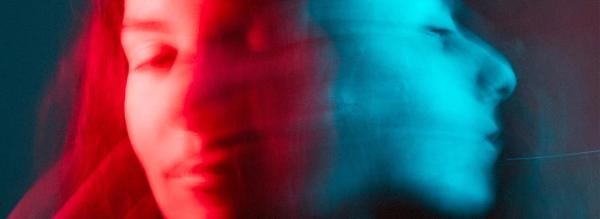
Shelter in the storm – how COVID-19 changed the lives of LGBTIQA+ young people
Many people lost jobs and were forced back into the family home during 2020. But shutdowns also pushed some 16–25-year-olds to the brink of homelessness, a Social Impact Grant report has found.

Paul Byron, Chancellor’s Postdoctoral Research Fellow,
Digital and Social Media
Profile page
Based on a survey of 660 young adults led by UTS digital and social media researcher, Paul Byron, the report found trans and gender diverse young people were particularly vulnerable.
This group made up 27% of survey respondents but accounted for 46% of those made homeless or at risk of homelessness and 35% of those who reported living with someone who made them feel unsafe or afraid.
‘Some people we interviewed talked about having a family or parents who made them feel like they couldn’t be themselves, who may have also misnamed them or misgendered them. Having that on a 24/7 basis during lockdown was extremely difficult,’ explains Paul.
Accessing mental health services and other support was also a challenge for more than a third of those surveyed.
The findings are alarming but not completely unexpected, says Paul, who partnered with LGBTIQA+ support service, Twenty10, and researchers from Western Sydney University and The University of Sydney to undertake the project.
MENTAL HEALTH SERVICES AND THE PANDEMIC
Because of stigma, LGBTIQA+ young people – and particularly trans and gender diverse young people – are more likely to struggle with mental health issues.
‘But a lot of people found it difficult to get the help they needed because informal drop-in centres like Twenty10 – where you can go casually or be taken by a friend – were forced to shut their doors during lockdown,’ explains Paul.
‘We also know a lot of services that specifically cater to trans folk were booked out for months.’
While increases in funding and a shift of services online plugged some gaps, it wasn’t always enough, said several overworked support workers and volunteers at Twenty10 interviewed as part of the project.
‘The thing is, we know more and more younger people are increasingly experiencing more severe mental health issues and can’t access LGBTIQA+ support services. And that’s national. That’s bigger than Twenty10 or this survey,’ says Paul.
THE DIGITAL DILEMMA – HOW TO MOVE A ‘DROP-IN’ SPACE ONLINE
Digital spaces – particularly those controlled and created by young people themselves – can be helpful for those still working out their identity, especially when they may feel marginalised by some mainstream health professionals like GPs, says Paul.
But during periods of lockdown, it also made sense for not-for-profit support services like Twenty10 to explore more digital options too.
In line with this, the team offered phone and web counselling options. Moving online also meant setting up a more casual hangout space for clients on Discord – a platform originally made popular by gamers. Here clients could choose to shoot the breeze, share links or watch videos with a friend, or simply absorb content posted by others, on a system that was already familiar to many of them.
Too often in health promotion and even counselling there’s a ‘top-down’ approach, says Paul. But the hangOUT Discord server (a server is like a platform ‘page’ or group) was created with input from Twenty10 clients – they had actually been requesting it before the pandemic struck.
BUILDING DISNEYLAND
‘In public health there is a real push to do more online service delivery, particularly with young people, because everyone thinks “young people are always online”,’ he says. ‘But that’s a gross simplification.’
The survey backs Paul up. It found that the majority of participants – two-thirds of whom were aged 16–17 – felt more alone and missed school and face-to-face contact with friends during lockdowns. Clearly physical spaces and physical contact matter to most people, whatever that person’s age.
Moreover, top-down approaches to social media rarely work, argues Paul. Or as one interview participant explained to him when he partnered previously with Twenty10 to build a prototype digital resource supporting those looking for help with their mental health – you could build Disneyland but you need people to want to go there.
‘People aren’t just going online to find information but to share it. They’re there to find people who have been through what they’re going through, people who can relate to their own life experiences,’ Paul says.
‘This is why Twenty10’s Discord server and platforms young people are already using are super important. Instead of trying to build entirely new systems to help them access support, we need to recognise that young people are part of systems already. They already have the online tools to communicate with and support each other – by-and-large they’ve created them themselves.’
The Problem
COVID-19 and associated lockdowns put pressure on us all, but researchers wanted to find out how young LGBTIQA+ people’s lives were affected.
The Response
660 LGBTIQA+ young people were asked questions about how COVID-19 and associated lockdowns affected them as part of a larger survey on mental health and wellbeing. Staff at support services, Twenty10 and QLife, were also asked qualitative questions about working with clients during the epidemic.
What helped accomplish this?
The project won Social Impact Grant funding from the Centre for Social Justice & Inclusion, which gave it the funding it needed to go ahead.
What has changed as a result?
While not definitive – further research is planned for later this year – the survey and resulting report support the case for additional funding for mental health and other support services for young LGBTIQA+ people. The report is available from https://www.twenty10.org.au/covid-19-case-study.
Download full case study
